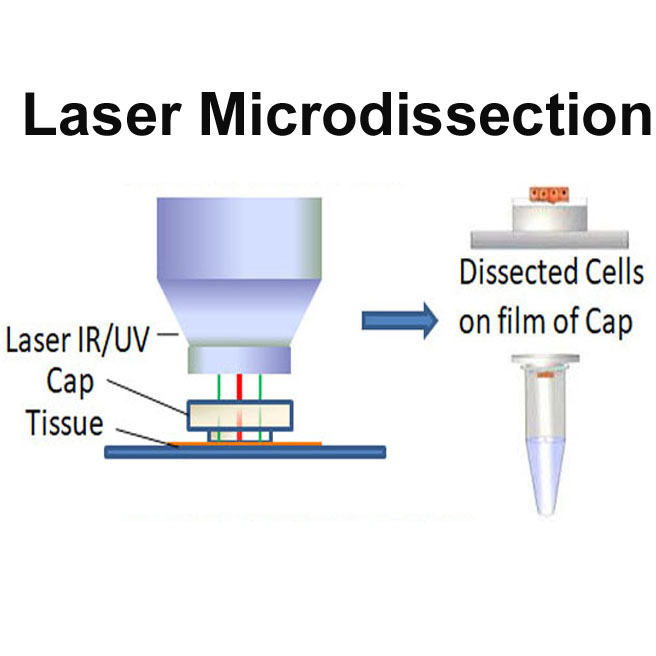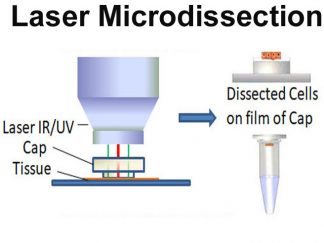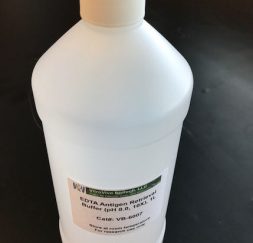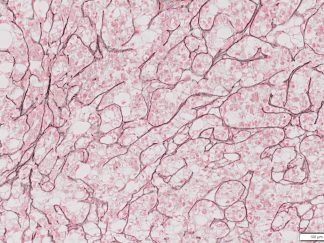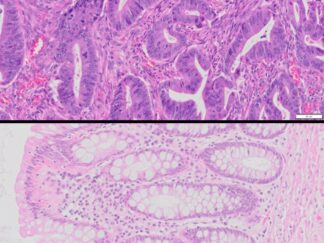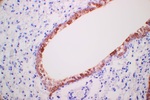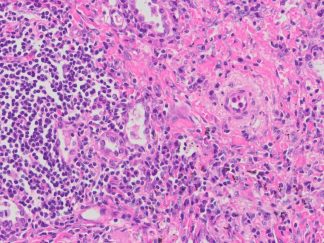Description
Sample Basic Information
| Tissue ID | Organ | Pathology Diagnosis | Gender | Age | Grade | TMN | IHC Data | Sample Format |
| Hu-02001A | Human breast | Normal breast tissue | Female | 45 | N/A | N/A | Ki 67 | FFPE |
Tissue H&E Staining and IHC images
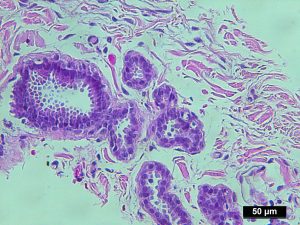
H&E Stain |
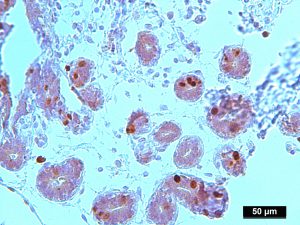
Ki 67 IHC |
Flowchart of LCM for The Product Preparation
- FFPE samples are cut at 6 microns and mounted onto pen membrane glass slides and let the slides dry for 2 hours at room temperature.
- After deparaffinization and rehydration, quick H&E staining is performed.
- Arcturus XT Laser Microdissection System is used for LCM. Microdissection is performed using IR and UV laser and CapSure Macro LCM Cap.
- The microdissected cells are on the film of Macro LCM Cap. The total dissected cells may be varied between 10,000 to 50,000 cells which depend on tissue type.
- Customers can be isolated DNA, RNA or protein from LCM Caps for the downstream applications.

Quality Control
- The tissue H&E staining slides are examined by certified pathologists. Pathological re-confirmation report is generated and digital image captured.
- LCM is supervised by our certified pathologist.
- Three example LCM images including Before, After LCM, and LCM cap images from LCM tissue slides are taken to demonstrate the dissected cells.
Product Format and Size
- Dissected cells on the film of Macro LCM Caps
- 2 LCM macro caps
Applications
- The pure cell population on the film of caps can be used for extraction of DNA, RNA/miRNA or protein for RT-PCR, cDNA array, sequencing, epegenectics, proteomics and antibody array, etc.
- The product is only used for biomedical research. It is not used for clinical diagnosis.
Storage
Store at -80ºC
References
- Longuespée R, et al. A laser microdissection-based workflow for FFPE tissue microproteomics: Important considerations for small sample processing, Methods;2016, 104: 154-162
- Cai J, et al. The Use of Laser Microdissection in the Identification of Suitable Reference Genes for Normalization of Quantitative Real-Time PCR in Human FFPE Epithelial Ovarian Tissue Samples. PLoS ONE 2014, 9(4): e95974.
- Drummond ES, et al. Proteomic analysis of neurons microdissected from formalin-fixed, paraffin-embedded Alzheimer’s disease brain tissue.Sci Rep. 2015;5:15456
- Bockmeyer CL, et al. Recommendations for mRNA analysis of micro-dissected glomerular tufts from paraffin-embedded human kidney biopsy samples. BMC Mol Biol. 2018;19(1):2.
- Murray, Graeme I. (Ed.). Laser Capture Microdissection (Methods and Protocols), © 2018

